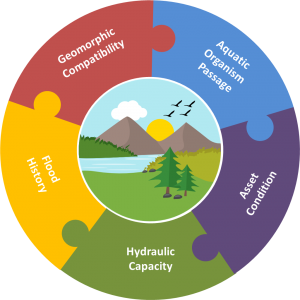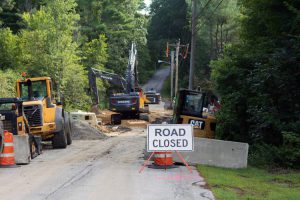
Because stream crossing replacements are costly, transportation planners and aquatic resource managers must be strategic about investments in these types of projects. It is difficult to attempt a one-size-fits-all approach to prioritizing stream crossing replacements, because different stakeholder groups assign varying levels of importance to the various characteristics of a crossing.
One approach to strategic investment is to quantify the ecological and societal benefits associated with each project and prioritize those with the greatest collective benefits. Another approach may be to focus on specific issues that are driven by individual stakeholder interests or funding availability. For example, fishery managers and watershed groups often prioritize stream crossing restoration efforts based on river connectivity and fish habitat. Whereas, transportation safety managers, generally prioritize the needs for road safety improvements to maintain access to critical services and minimize traffic incidents.
Significant advances have been made in developing multi-criteria prioritization models and several research groups are actively working on developing new decision-support tools to assist in targeting the highest-priority projects.
This list highlights some of the work that has been done in New Hampshire:
Scientific Basis of Road Stream Crossing Assessments in the Ashuelot River Watershed
Piscataquog River Watershed Culvert Prioritization Model
The Oyster River Culvert Analysis Project
Proactive watershed planning and community engagement in the Warner River watershed

Crews work to replace a stream crossing in Concord NH to improve flood resiliency, fish and turtle passage, and enhance floodplain connectivity with grant funding from the NHDES Aquatic Resource Mitigation Fund.